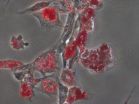(Press-News.org) A new analysis confirms that US lung cancer rates are declining overall, but it also uncovers previously unrecognized trends related to cancer subtype, sex, race/ethnicity, and age. Published early online in CANCER, a peer-reviewed journal of the American Cancer Society, the findings provide a more accurate picture of the state of lung cancer in the country and will help researchers in their ongoing efforts to monitor the population's lung health.
Overall, lung cancer rates are declining in the United States, but little is known about trends related to different subtypes of lung cancer and different demographic groups. To investigate, Denise Riedel Lewis, PhD, MPH, of the National Cancer Institute, and her colleagues analyzed information from the Surveillance, Epidemiology, and End Results (SEER) program. Their goal was to update the classification of lung cancer subtypes and to determine the rates of lung cancer overall as well as the rates of squamous cell, small cell, adenocarcinoma, large cell, other, and unspecified carcinomas among US whites and blacks diagnosed from 1977 to 2010 and white non-Hispanics, Asian/Pacific Islanders, and white Hispanics diagnosed from 1992 to 2010.
The researchers found that squamous and small cell carcinoma rates declined since the 1990s, although less rapidly among females than males. Rates for unspecified lung cancer also declined. Adenocarcinoma rates decreased among males through 2005, after which they rose rapidly from 2006 to 2010 among every racial/ethnic/gender group. Recent adenocarcinoma rates were higher among young females than among males for all racial/ethnic groups.
The findings indicate that lung cancer rates vary by subtype, sex, race/ethnicity, and age. "It is important to monitor these changes as clinical cancer experts diagnose lung cancer and offer treatment based on specific characteristics of the cancer," said Dr. Lewis. Because 90 to 95 percent of lung cancers in the United States are attributable to smoking, rate changes reflect historical cigarette smoking rates, duration, cessation, and cigarette composition. "These results can serve as a place marker for our population's changing lung exposures," Dr. Lewis noted.
INFORMATION:
US lung cancer rates vary by subtype, sex, race/ethnicity, and age
2014-08-11
ELSE PRESS RELEASES FROM THIS DATE:
One in 6 lupus patients readmitted to hospital within 30 days of discharge
2014-08-11
A new study reveals that one in six patients with systemic lupus erythematosus (SLE) is readmitted to the hospital within 30 days of being discharged. Results published in Arthritis & Rheumatology, a journal of the American College of Rheumatology (ACR), show that black and Hispanic SLE patients were more likely to be readmitted than white patients. Readmissions among patients insured by Medicare or Medicaid were also more likely compared to patients covered by private insurance.
Lupus is a systemic, autoimmune disease where an overactive immune system attacks healthy ...
Postmenopausal breast cancer risk decreases rapidly after starting reg. physical activity
2014-08-11
PHILADELPHIA — Postmenopausal women who in the past four years had undertaken regular physical activity equivalent to at least four hours of walking per week had a lower risk for invasive breast cancer compared with women who exercised less during those four years, according to data published in Cancer Epidemiology, Biomarkers & Prevention, a journal of the American Association for Cancer Research.
"Twelve MET-h [metabolic equivalent task-hours] per week corresponds to walking four hours per week or cycling or engaging in other sports two hours per week and it is consistent ...
Breech babies have higher risk of death from vaginal delivery compared to C-section
2014-08-11
While a rise in cesarean section (C-section) delivery rates due to breech presentation has improved neonatal outcome, 40% of term breech deliveries in the Netherlands are planned vaginal deliveries. According to a new Dutch study that is published today in Acta Obstetricia et Gynecologica Scandinavica, a journal of the Nordic Federation of Societies of Obstetrics and Gynecology, there is a 10-fold increase in fetal mortality in vaginal delivery for breech presentation compared to elective C-section.
Up to 4% of deliveries are breech births—when the baby is delivered buttocks ...
Spectacular 3-D sketching system revolutionizes design interaction and collaboration
2014-08-11
Collaborative three-dimensional sketching is now possible thanks to a system known as Hyve-3D that University of Montreal researchers are presenting today at the SIGGRAPH 2014 conference in Vancouver. "Hyve-3D is a new interface for 3D content creation via embodied and collaborative 3D sketching," explained lead researcher Professor Tomás Dorta, of the university's School of Design. "The system is a full scale immersive 3D environment. Users create drawings on hand-held tables. They can then use the tablets to manipulate the sketches to create a 3D design within the space". ...
Discovery of new form of dystrophin protein could lead to therapy for some DMD patients
2014-08-10
Scientists have discovered a new form of dystrophin, a protein critical to normal muscle function, and identified the genetic mechanism responsible for its production. Studies of the new protein isoform, published online Aug. 10 in Nature Medicine and led by a team in The Research Institute at Nationwide Children's Hospital, suggest it may offer a novel therapeutic approach for some patients with Duchenne muscular dystrophy, a debilitating neuromuscular condition that usually leaves patients unable to walk on their own by age 12.
Duchenne muscular dystrophy, or DMD, ...
Scientists unlock key to blood vessel formation
2014-08-10
Scientists from the University of Leeds have discovered a gene that plays a vital role in blood vessel formation, research which adds to our knowledge of how early life develops.
The discovery could also lead to greater understanding of how to treat cardiovascular diseases and cancer.
Professor David Beech, of the School of Medicine at the University of Leeds, who led the research, said: "Blood vessel networks are not already pre-constructed but emerge rather like a river system. Vessels do not develop until the blood is already flowing and they are created in response ...
Newly discovered heart molecule could lead to effective treatment for heart failure
2014-08-10
INDIANAPOLIS -- Researchers have discovered a previously unknown cardiac molecule that could provide a key to treating, and preventing, heart failure.
The newly discovered molecule provides the heart with a tool to block a protein that orchestrates genetic disruptions when the heart is subjected to stress, such as high blood pressure.
When the research team, led by Ching-Pin Chang, M.D., Ph.D., associate professor of medicine at the Indiana University School of Medicine, restored levels of the newly discovered molecule in mice experiencing heart failure, the progression ...
Bioengineers: Matrix stiffness is an essential tool in stem cell differentiation
2014-08-10
Bioengineers at the University of California, San Diego have proven that when it comes to guiding stem cells into a specific cell type, the stiffness of the extracellular matrix used to culture them really does matter. When placed in a dish of a very stiff material, or hydrogel, most stem cells become bone-like cells. By comparison, soft materials tend to steer stem cells into soft tissues such as neurons and fat cells. The research team, led by bioengineering professor Adam Engler, also found that a protein binding the stem cell to the hydrogel is not a factor in the differentiation ...
Pairing old technologies with new for next generation electronic devices
2014-08-10
UCL scientists have discovered a new method to efficiently generate and control currents based on the magnetic nature of electrons in semi-conducting materials, offering a radical way to develop a new generation of electronic devices.
One promising approach to developing new technologies is to exploit the electron's tiny magnetic moment, or 'spin'. Electrons have two properties – charge and spin – and although current technologies use charge, it is thought that spin-based technologies have the potential to outperform the 'charge'-based technology of semiconductors for ...
Physicists create water tractor beam
2014-08-10
VIDEO:
Physicists at the Australian National University have created a tractor beam in water. Using a simple wave generator they can create water currents which could be used to confine oil...
Click here for more information.
Physicists at The Australian National University (ANU) have created a tractor beam on water, providing a radical new technique that could confine oil spills, manipulate floating objects or explain rips at the beach.
The group, led by Professor Michael ...





